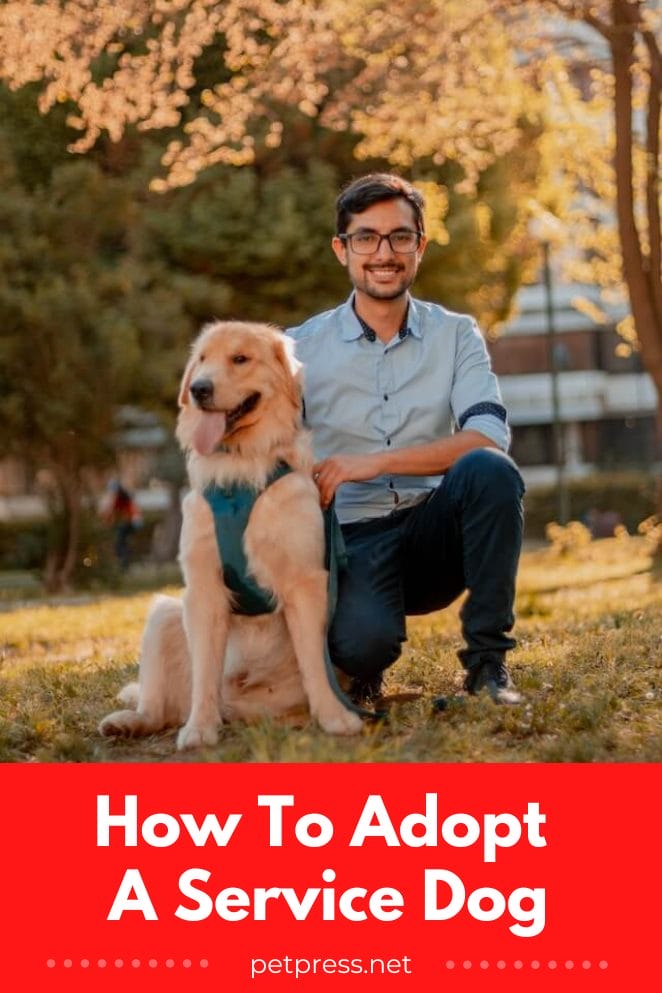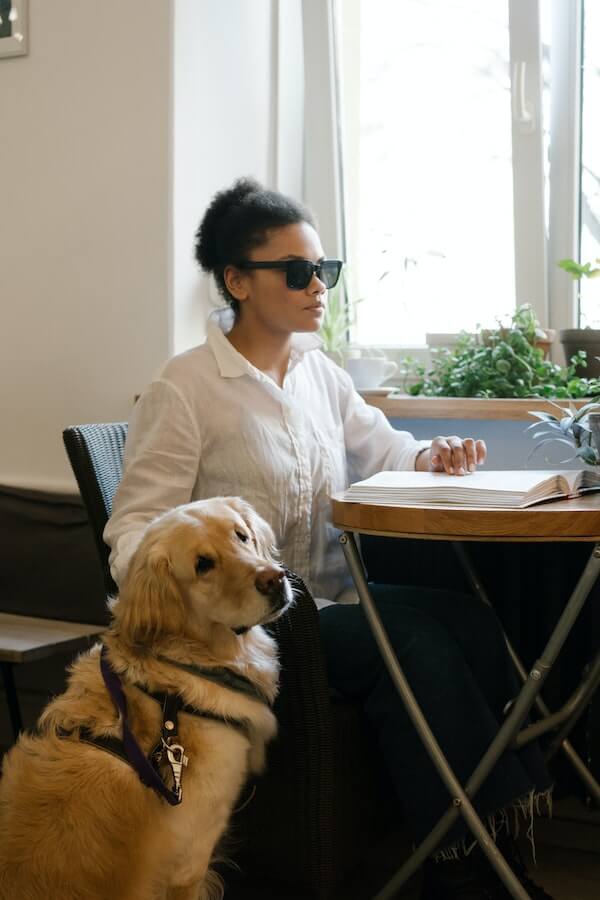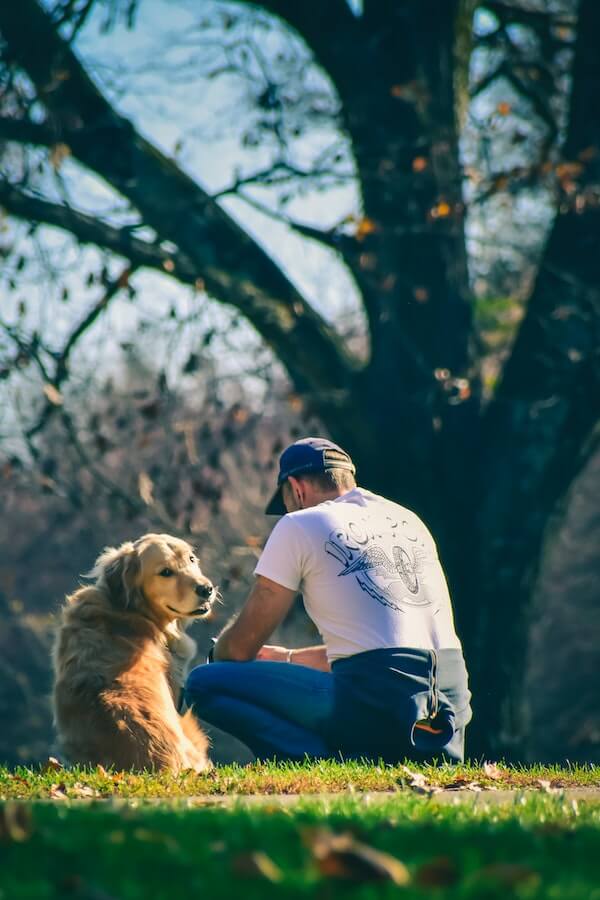
Adopting a service dog can be an incredibly rewarding process. Imagine having a loyal friend on every adventure, ready and willing to lend a paw wherever needed! But, how to adopt a service dog?
From providing comfort in difficult times to lending assistance with tasks like opening doors or carrying items – these dogs have been specifically trained to help make life easier.
Whether you’re looking for a companion, assistance with daily tasks, or just hoping for some extra fluffiness in your life, here are the basics of getting a helping paw!
What are service dogs?
Service dogs are specially trained to assist people with disabilities. These furry friends provide emotional and physical support, depending on the individual’s needs.
They can help a person walk, pick up objects, open doors, turn on lights, and alert their handlers of an impending episode or anxiety attack.
Additionally, service dogs can even assist with cognitive tasks and help their handler remain organized.
Ultimately, these amazing animals give those with disabilities more independence and allow them to engage in everyday activities without fear or worry.
All in all, service dogs are remarkable selfless companions that truly make a difference in the lives of their handlers.
Not to be confused with therapy dogs or emotional support animals, service dogs undergo rigorous training to ensure they meet certain behavioral requirements needed for public access.
To become an official service dog, the animal must pass tests from an approved organization and have adequate behavior around people and other animals.
Furthermore, they must understand basic commands such as sit, stay, and come when called.
How to adopt a service dog

Step 1: Do Your Research
Before you jump in and start the process of adopting a service dog, it is important to do your research.
Find out what type of service dog is right for you, understand the costs associated with adoption and care, and familiarize yourself with regulations specific to your area.
Don’t forget to also consider how much time and energy you are able to devote to training and caring for your pup.
Step 2: Determine your eligibility:
In most cases, prospective handlers must be able to provide proof of a disability and have a doctor’s prescription for a service dog.
Additionally, it is important to take into account the lifestyle you will lead with your pup.
Some organizations may require potential handlers to prove they can properly care for the animal in terms of providing housing, food, vet bills, and more.
When we are talking about how to adopt a service dog, this is one of the most important steps.
Step 3: Contact A Reputable Organization
Once you have completed your research, it’s time to contact a reputable organization that can help match you up with the perfect service dog.
There are many organizations out there so make sure the one you choose is certified by a recognized national or state program.
Step 4: Find the best breed:
You may already have an idea of the breed of service dog you want but it’s always smart to make sure that it is a good fit for your lifestyle.
Consider factors like size, temperament, and energy level when selecting the best breed for you.
Step 5: Complete Your Application
Now that you’ve identified a reputable organization and selected the right breed for your needs, it’s time to complete your application.
This will involve providing information about yourself and outlining why you feel a service dog would be beneficial in your life.
You may also be asked to provide references from health professionals or previous employers who can attest to the need for a service animal.
Step 6: Training & Certification:
Once you’ve been matched with a service dog, it’s time to start the training process.
Depending on your needs, you may want to enroll in a specialized service-dog program or seek out individual training from an accredited trainer.
Once the proper training has been completed and you both have gone through the certification process, your pup will officially be ready for work.
Step 7: Follow Through With Maintenance Checks And Veterinary Care
Regular maintenance checks and veterinary care are essential for keeping your service dog healthy.
Make sure that all vaccinations are up-to-date, as well as any regular preventative treatments like flea and tick medication or microchip implants.
Additionally, it’s important to regularly check for any physical or behavioral issues that may arise.
Step 8: Foster A Lasting Bond
Finally, it’s important to foster a lasting bond between you and your service dog.
Spend time with them every day, care for them, and get to know their individual personality and needs.
This will help create a secure and trusting relationship that is essential for the success of your pup in their new career.
Breeds that make the best service dogs

While all dogs have their own unique personalities, some breeds tend to make better service animals than others. Here are five breeds that make outstanding service dogs:
1. Labrador Retriever
Not only are Labrador Retrievers incredibly intelligent, but they’re also loyal and very easy to train.
Labs love people and thrive when given a job to do. This makes them perfect for almost any type of service animal task!
They’re eager to please, so you can be sure your lab will work hard for you in whatever role it is given.
2. German Shepherd
German Shepherds are incredibly versatile dogs that can excel in a variety of roles. They’re devoted to their owners and have the courage to step up when needed.
A well-trained GSD makes an excellent service dog, as they’re reliable and dependable—not to mention obedient!
3. Golden Retriever
Another loyal breed, Golden Retrievers makes great service dogs due to their patient nature with people of all ages.
Goldens tend to be very gentle and loving, making them ideal for many therapy tasks as well as providing emotional support for those in need.
4. Poodle
Intelligent, energetic, and playful, poodles make terrific service animals! These fluffy bundles of joy are eager to please their owners, which makes them easy to train.
Plus, they’re hypoallergenic so they may be a better fit for those with allergies.
5. Australian Shepherd
Aussies have lots of energy and intelligence, making them excellent service dogs. They’re also incredibly loyal and devoted—Aussies will stay by your side no matter what!
With their long coats, Aussies tend to require a bit more maintenance than other breeds. However, all that grooming pays off in the end when you have the perfect companion by your side.
Conclusion

Now that you know how to adopt a service dog, you can start on the right foot.
Adopting a service dog is a big decision and commitment, but can be incredibly rewarding.
Whether you’re looking for a companion to provide emotional support or help with physical tasks, there’s no denying the unconditional love that comes with adding a furry friend to your family.
With careful consideration of your needs, you can find the perfect pup to support your lifestyle and bring joy to your life.


GIPHY App Key not set. Please check settings